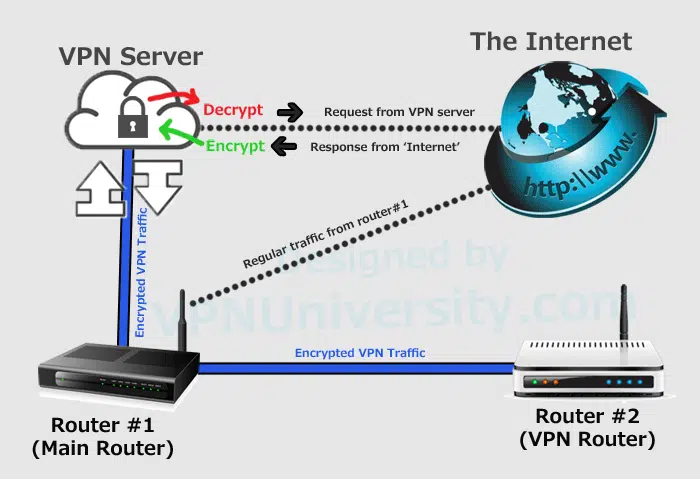When your router has a VPN connection, all devices on your network will protect with end-to-end encryption. Unlike mobile devices and PCs, though, routers don’t have user interfaces to manage the connection or change its settings.
Fortunately, it’s possible to add VPN functionality to your router by flashing third-party firmware such as DD-WRT or OpenWrt. This process is hardware-dependent and requires some tech savvy, but it’s also fairly simple.
Table of Contents
Configure Your How to Connect VPN to the Router:
Once you have your router configured to run VPN software, all the devices in your home will automatically be protected when they log onto the internet.
This protection offers additional security against cyber snooping and tracking because it encrypts all the data that travels to and from your device.
The best way to set up a router with VPN is by flashing it with open-source firmware like DD-WRT or Tomato.
This firmware installs a different operating system on the router that replaces what came with it out of the box.
This is a fairly technical process and it will vary by router model. Most of the time, you will need to consult the support page or FAQ section for your router maker and specific firmware version for detailed instructions.
You also need a reliable VPN provider that supports your router model and has a well-documented router setup guide. Ensure they prioritize OpenVPN over other protocols (like Wireguard) and have good speeds to keep your devices fast.
Download the VPN Configuration File:
Once you have a router with compatible firmware installed, it’s time to configure the VPN. The exact steps will vary depending on your router model and the firmware you use, but your VPN’s support documentation should be a good place to start.
Once your router is configured with a VPN, every device connect to it will have its Internet traffic routed through the encrypted tunnel. That includes your PCs, smartphones, smart TVs, and even IoT devices like smart fridges.
If you want to avoid flashing your router yourself, there are companies that sell pre-flashed routers ready to connect to a VPN service.
They’re not cheap, but they do come with a warranty and may be less of a risk than trying to flash your own router.
Run the VPN Configuration File:
Using a VPN on routers is a very technical process and it will heavily depend on your VPN provider. Look for a service that supports the OpenVPN protocol (most do) and offers decent speeds. Ideally, you want to have a minimum of 50+ Mbps speed.
Once you have a good VPN provider, make sure your router supports it. You can check this by doing an ipconfig in Command Prompt (Windows) or by using a web browser to view your router’s configuration page (Mac OS X, Linux). Find the line that says Default Gateway and write it down.
Some routers are sold pre-flashed with a certain VPN and that’s a good option if you don’t feel comfortable flashing your own device. However, this can be expensive.
A cheaper alternative is to purchase a router that’s designed for VPN usage, such as FlashRouters. There are many options that will work with almost any budget.
Make sure all your devices can connect to the internet and that your IP address shows the location of your VPN server.

Connect to the VPN:
As long as your router is VPN-compatible, you’ll be able to use it to secure all devices connected to it. However, a VPN-enabled router won’t have the same flexibility as VPN software, which allows you to pick and choose servers, tunneling protocols, and other settings.
Whether or not this is a good solution for you depends on your goals. If you want to protect multiple devices with a single subscription, a VPN-enabled router might be the best option for you.
Fortunately, many quality routers support a wide variety of VPN providers. If yours doesn’t, there are workarounds you can try.
These involve firmware flashing, which means replacing the stock router firmware with an open-source version like DD-WRT or Tomato.
This can be risky and requires technical know-how. It’s also a bit more time-consuming than installing a VPN app on each of your devices. However, it can be the most effective way to protect your network.





Add comment